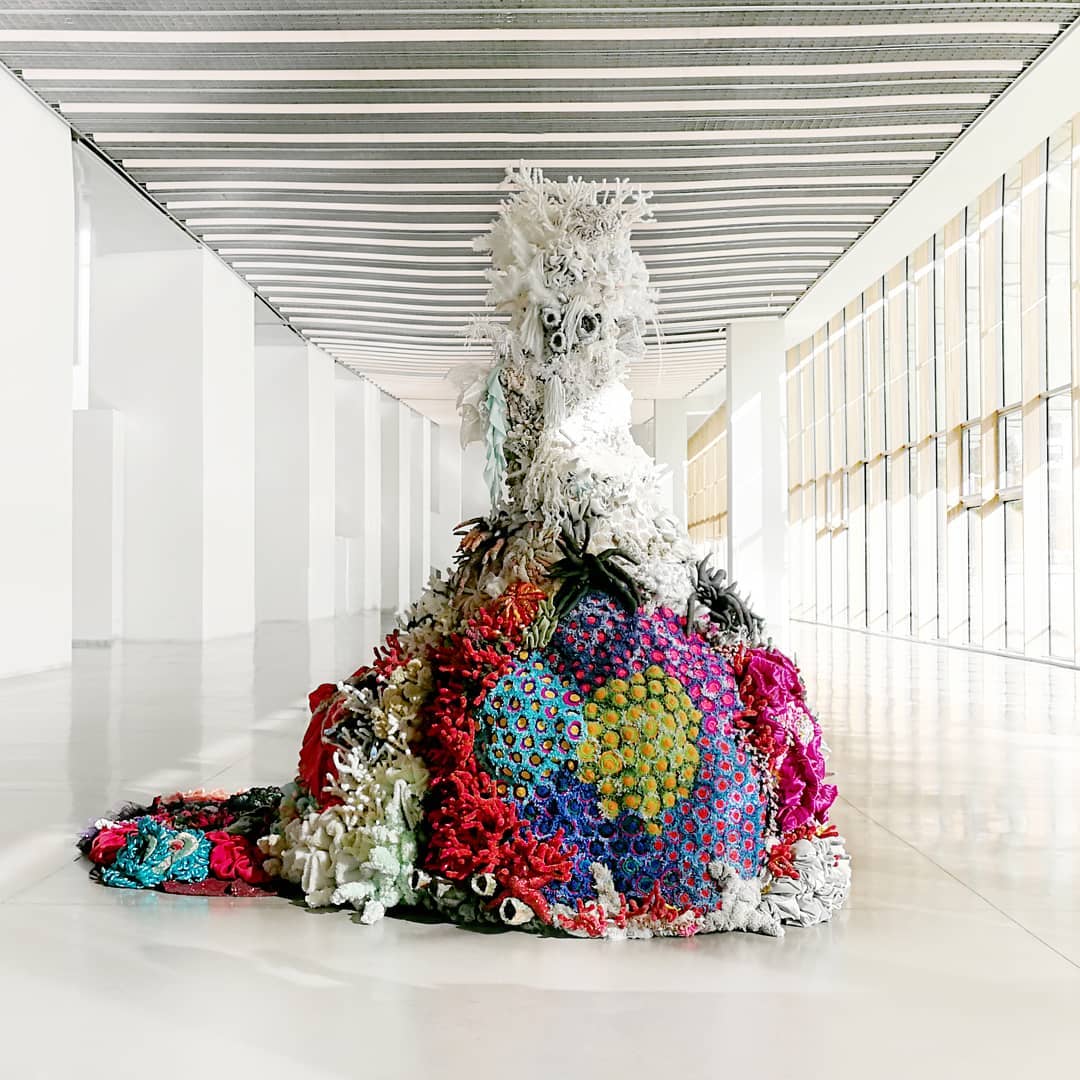
Ames Landscape
Meredith James is like a latter day Alice in Wonderland documenting what she sees in her journey down and through a contemporary rabbit hole. Her videos, installations, and sculptures play with scale and trompe l’oeil to create optical illusions that are as disruptive as they are funny. In “Day Shift”, a short video, she plays a security guard who, having just left work, crawls into the backseat of her SUV and reemerges as a miniature figure in the building’s security monitor. In Ames Landscape, an installation, two figures stand in a glade. A large mountain reaches skyward in the distance. The space is configured so that, though the space is logically consistent, one figure stands much taller than the other. In Hallway, another installation, a door opens onto stairs that lead down to the basement. The stairs, of course, go nowhere because the space is flat. The fact that the illusion is a dead ringer for the space’s actual stairs that lead to a real basement is not even remotely coincidental.
She says this propensity for disruption stems partially from her stable childhood in New York and her undergraduate years at Harvard. Things she saw in both locations, she says, appeared on the surface to be unchanging. A closer examination, though, revealed that these things were composed of a mash up of elements from different times. Hers is a dynamic aesthetic. She chooses items that appear to be unchanging, things that we take for granted. Things like a security monitor, a landscape, a door. She undercuts this immutability to reveal the flux of time masquerading as a seeming static relationship of things old and things new. It some cases, it provides comic relief. In all cases, it provides an awareness of the way that the past informs the present, even in the most unlikely places.
Day Shift by Meredith James.


See Through

See-Through


Land Lock



Hallway


 Stephanie H. Shih's ceramic sculptures reflect on her upbringing as a first-generation Asian-American through “the lens of the Asian-American pantry.” The output ranges from hundreds and hundreds of porcelain dumplings to certain imported sauces and oils. With her work, she's also raised funds for communities across the U.S., from displaces indigenous tribes to hurricane victims.
Stephanie H. Shih's ceramic sculptures reflect on her upbringing as a first-generation Asian-American through “the lens of the Asian-American pantry.” The output ranges from hundreds and hundreds of porcelain dumplings to certain imported sauces and oils. With her work, she's also raised funds for communities across the U.S., from displaces indigenous tribes to hurricane victims.
 In
In  Swiss artist
Swiss artist